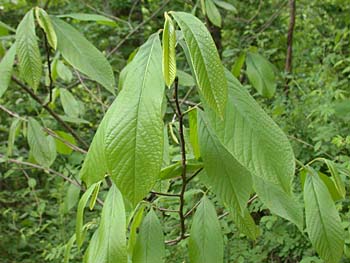
| Pawpaw is a fairly common colony-forming understory small tree of rich bottomlands. Dwarf Pawpaw (Asimina parviflora), which occurs on drier sites, is similar, but with smaller flowers, smaller leaves, and shorter stature. Pawpaw leaves are simple, entire, large (up to a foot long), and malodorous if crushed. Orange Co., NC 5/4/03.
|
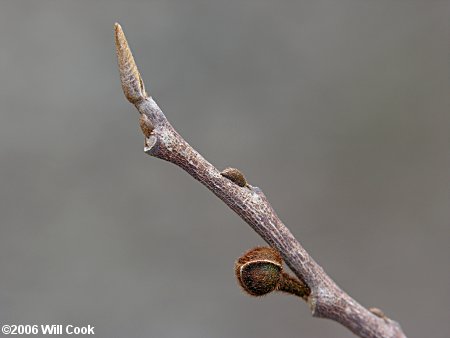
| Flower and leaf buds breaking in early spring. Person Co., NC 4/1/06.
| 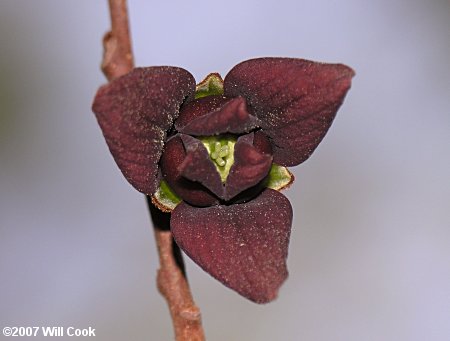
| View from beneath a flower. Orange Co., NC 4/9/07.
| 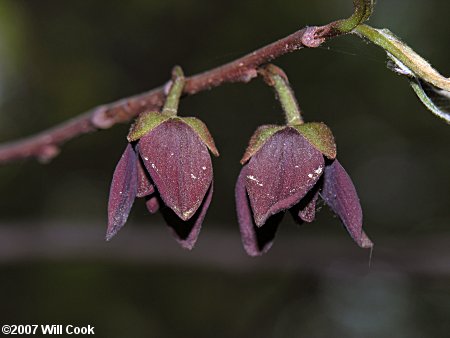
| The flowers face downwards. Orange Co., NC 4/9/07.
|
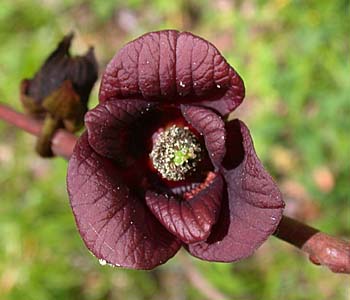
| Pawpaw produces unmistakable purplish-brown flowers from late March to mid-April. The Zebra Swallowtail (Eurytides marcellus) feeds on the leaves of Asimina species as a caterpillar. Orange Co., NC 4/14/02.
|
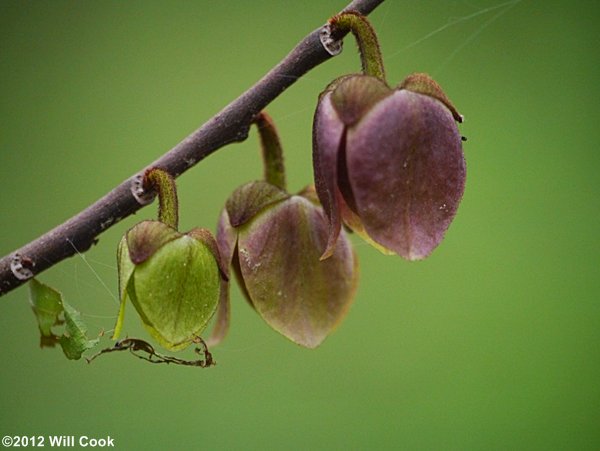
| Durham Co., NC 3/25/2012.
| 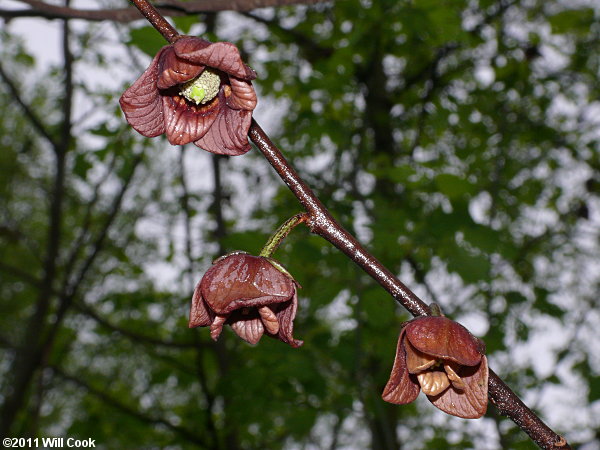
| Durham Co., NC 4/9/2011.
| 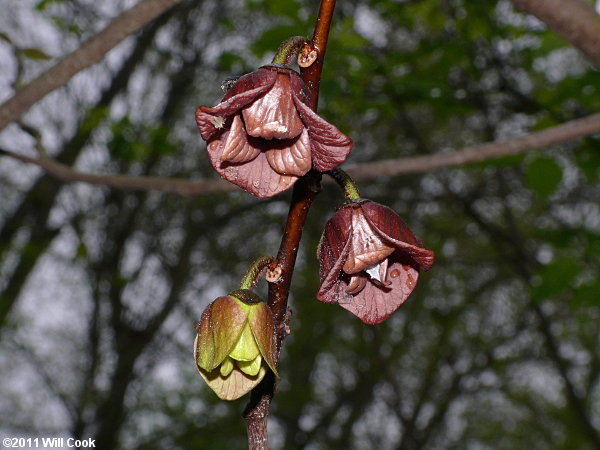
| Durham Co., NC 4/9/2011.
| 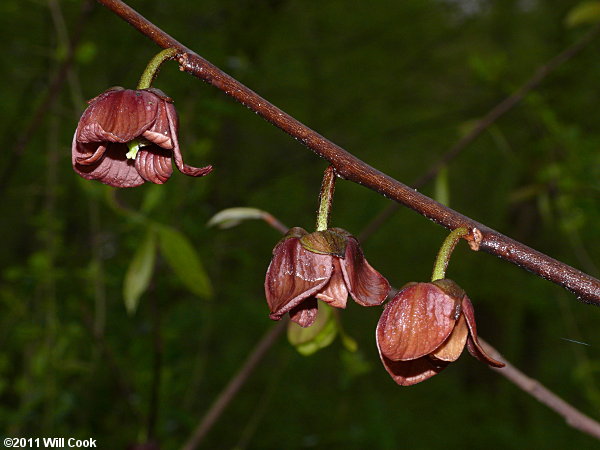
| Durham Co., NC 4/9/2011.
| 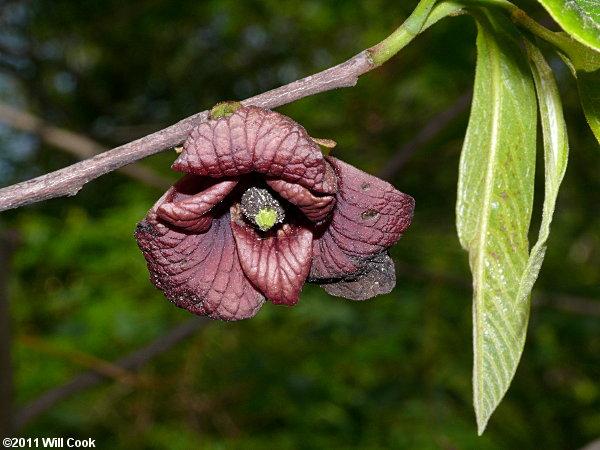
| Durham Co., NC 4/15/2011.
| 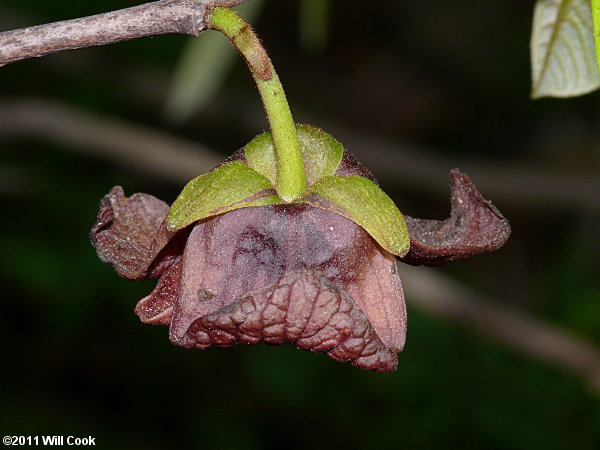
| Durham Co., NC 4/15/2011.
| 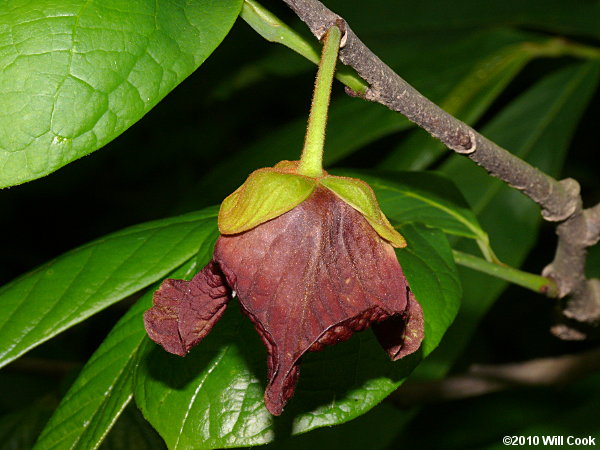
| A late flower. Caswell Co., NC 5/21/10.
| 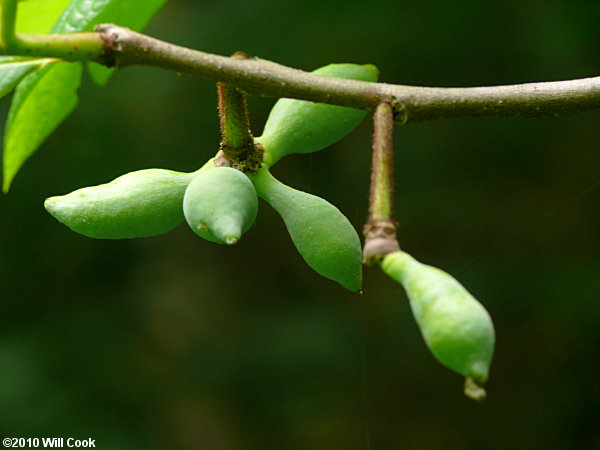
| Ripening fruits from the same tree as the flower above. Caswell Co., NC 5/21/10.
| 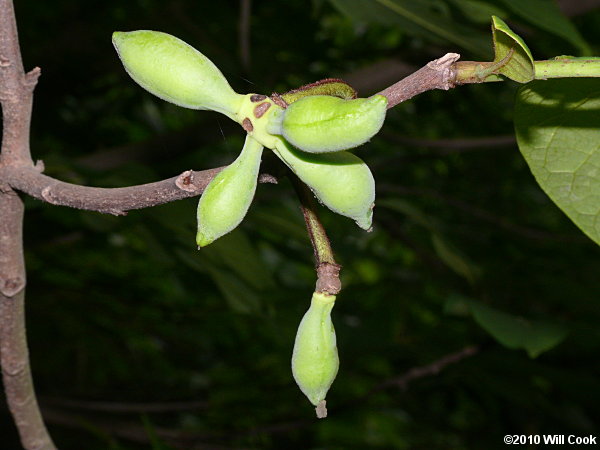
| The appearance of the fruits give rise to one of the vernacular names, the "Indiana Banana". Caswell Co., NC 5/21/10.
|
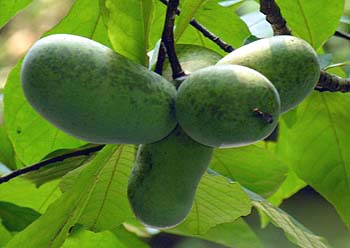
| The oddly-shaped fruits are edible, if you're lucky enough to find a ripe one before it's harvested by wildlife. Montgomery Co., MD 9/10/05.
|
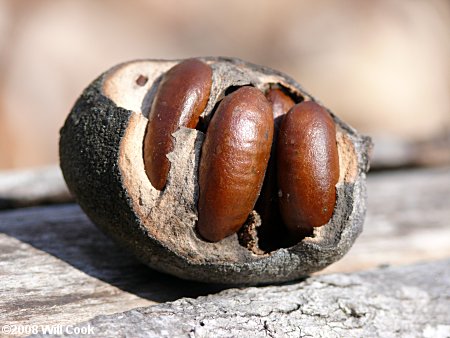
| An old mummified fruit opened to reveal the large, shiny brown seeds. Durham Co., NC 3/1/08.
| 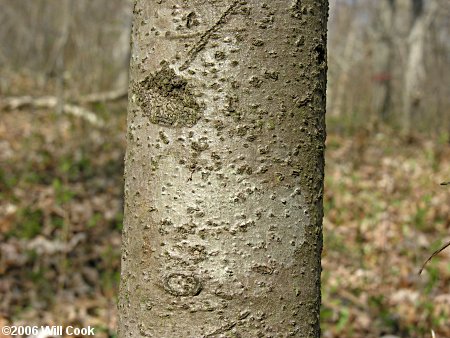
| Bark detail. Person Co., NC 4/1/06.
|
More information:
Discover Life
NC State
UCONN
USDA Plants Database
Virginia Tech Dendrology
Recommended Tree, Shrub, and Woody Vine Identification Guides
|
|
















